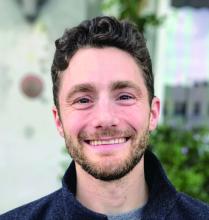Over the past months, society has reflected on the role of law enforcement. The shocking murder of George Floyd has forced Americans to reconsider the place of police officers in maintaining order.
The death of Mr. Floyd is certainly not a lone incident; in 2019, 1,098 people were killed by those tasked with protecting us.1 The United States holds 25% of the world’s incarcerated, though it makes up only 5% of the world’s population.2 Society is demanding a newer and better system.
The phrase “defund the police” can easily be dismissed because, to many, it implies an appeal to lawlessness. While we certainly cannot speak for any one protester, we think that many of the necessary changes are painfully obvious.3 Society wants law enforcement where force is not the default position but the last option. Society wants law enforcement where verbal conflict resolution is the primary focus of training and intervention. Society wants a correctional system that is more rehabilitative than it is punitive.4
Major U.S. cities spend up to 40% of their funds on police budgeting, much more than what is dedicated to community resources and infrastructure. This trend continues to increase between 1986 and 2013, state spending for correctional facilities increased by 141%.5 Yet, as psychiatrists, we are well aware that social determinants are a strong factor in future criminality.6 Increasing police budgets without addressing structural root causes and risk factors for future asocial behavior is not a wise approach to reducing unlawful behavior. Investing more into programs and policies that reduce these risks is essential.
Using the adverse childhood experiences (ACE) questionnaires, researchers have supported the idea that social programs are a key player in an improved criminal system. The ACE study identified 10 forms of childhood trauma in 17,000 patients, including abuse, neglect, abandonment, household dysfunction, and exposure to violence, that were strongly associated with negative psychological outcomes, engagement in high-risk behaviors, significant medical consequences, and even early death.7 More recent research has shown that those ACEs were four times more prevalent in a criminal offender group than in the general population.8 Psychiatry is in a unique position to address and provide education about ACEs as a tool to identify and help at-risk youths.
Many protesters have asked for mental health providers to have a primary role in this societal reflection and in providing a solution.9 This makes particular sense when considering that almost 20% of calls to law enforcement are for persons with impaired judgment from mental illness or intoxication, and one in four patients with mental illness has been arrested.10,11 We are humbled by this public trust and request. We believe psychiatry can provide many answers to this societal angst. After all, psychiatry is a specialty dedicated to addressing behavioral problems in an evidence-based way.
Yet, we should not forget psychiatry’s imperfect past and our own role in the creation of this system. While this article does not attempt to catalog psychiatry’s faults, one can start by recognizing that mass incarceration is partly a response to how poorly human beings were treated in asylums. Psychiatry was at one time a main enforcer of societal disenfranchisement. After most asylums were closed in 1963 with the Community Mental Health Act, correctional facilities became the largest purveyors of mental health care, often with damaging results.12 If psychiatry were to advocate for the reestablishment of asylums as a solution, we fear that psychiatry would have missed the point. We wonder whether the psychiatrists who have railed against deinstitutionalization since the 1970s do not realize that violence, unethical experimentation, and even racism were at times attributes of asylums.13
Psychiatry can and should be much more than what it once was. Instead of indirectly and inaccurately suggesting that our patients commit mass murders, we should improve research in the field of violence risk assessment and management. As many have already pointed out, violence risk assessment is permeated with overestimation of its potential and, more concerningly, tainted by evidence of implicit racism.14 Implicit racism extends to rights-limiting treatments as well. As previously studied, involuntary outpatient programs often referred to as assisted outpatient treatment are disproportionately levied on Black Americans.15 Instead of routinely seeking to expand abilities to involuntary treat and limit the rights of our patients, we should strive to be a violence-free alternative to law enforcement, not the medical version of police.
Psychiatrists should start actively training, practicing, and researching how to address nonviolent emergency calls. Training should include more robust deescalation training, techniques on the evaluation of patients outside of health care facilities (for example, the street), and a broadening of interventions to include proficiency in the treatment of subclinical populations seeking emergency care without the need to be formally labeled with a psychiatric disorder. Ride-alongs with police officers, volunteering at crisis hotlines, and home calls should not be volunteer or elective experiences for psychiatrists but a required part of training.
Thankfully, some local jurisdictions already have started promising practices that merit replication or at least academic review. Austin, Tex., recently implemented the capability of requesting mental health emergency calls when contacting 911.17 Eugene, Ore., has had the CAHOOTS (Crisis Assistance Helping Out On The Streets) program since 1989, where a medical provider and a mental health provider respond to calls without any law enforcement officers.18 Our own San Diego County has an innovative PERT (Psychiatric Emergency Response Team) program, which partners a mental health provider to a police patrol, allowing an ability to quickly provide different types of services.19 Programs like these show us what is possible. At this time, there is little research to evaluate many programs’ effectiveness.20 Psychiatry should seize this moment to be at the forefront of studying, then educating the public on what works and how to reproduce it.
Police officers have a difficult profession. They are tasked with preventing and predicting crime, often to the point of risking their own lives. Historically, police have been the first call to handle issues for which they are not equipped, ranging from fixing homelessness to arresting violent people using nonviolent means. The idea that police should be able to protect us in all situations has been mistakenly ingrained in our minds. Officers themselves do not feel adequately trained to handle mental health crises.21 “Defund the police” also means a recognition by governments, the public, and police themselves that officers should not be on the front lines for every emergency situation. We must diversify our first responders. Psychiatry should hear this call and be ready.
Since the death of Mr. Floyd, mental health professionals have attempted to voice empathy and warmth to those feeling left out and disenfranchised. Mental health professionals have voiced a desire to educate themselves on systemic biases and antiracism. However, we argue that psychiatry is not and has never been a bystander to the societal debate on the management of different and criminal behavior. While it may be enough for many fields to express sympathy from the sidelines, psychiatry has been and continues to be an active player in the disenfranchisement of minority populations in the criminal justice system. Society appears to be offering us a chance at repairing our past and helping the future. Let’s take it with honor and humility.
References
1. Collins S. Police killings can be captured in data. The terror police create cannot. Vox.com. 2020 Jun 19.
2. Lee MYH. Yes, U.S. locks people up at a higher rate than any other country. The Washington Post. 2015 Jul 7.
3. McDowell MG, Fernandez LA. Critical Criminology. 2018;26(3):373-91.
4. Thielo AJ et al. Criminology & Public Policy. 2016;15(1):137-70.
5. The Center for Popular Democracy. Freedom to Thrive.
6. Hipp JR. Criminology. 2007;45(3):665-97.
7. Felitti VJ et al. Am J Prev Med. 1998;14(4):245-58.
8. Reavis JA. Perm J. 2013 Spring;17(2):44-8.
9. McHarris PV, McHarris T. No more money for the police. The New York Times. 2020 May 20.
10. Kaminski RJ et al. Police Quarterly. 2004;7(3):311-38.
11. Livington JD. Psychiatr Serv. 2016 Aug 1;67(8):850-7.
12. Galanek JD. Cult Med Psychiatry. 2013 Mar;37(1):195-225.
13. Raz M. Nature. Book Review. 2020 Apr 21.
14. Dressel J, Farid H. Sci Adv. 2018 J 17;4(1):eaao5580.
15. Swartz MS et al. New York State assisted outpatient treatment program evaluation. 2009 Jun 30.
16. Barnes SS and Badre N. Psychiatr Serv. 2016 Jul 1;67(7):784-6.
17. Fox A. Austin budget adds millions for mental health response in 911 services. efficientgov.com. 2019 Sep 13.
18. Elinson Z. When mental health experts, not police, are the first responders. The Wall Street Journal. 2018 Nov 14.
19. Improved responses in psychiatric crises: The Psychiatric Emergency Response Team.
20. Kane E et al. Crim Behav Ment Health. 2018 Apr;28(2):108-19.
21. Wells W, Schafer JA. Officer perceptions of police responses to persons with a mental illness, in “Policing: An International Journal of Police Strategies & Management,” 2006 Oct;29(4):578-61.
Dr. Malik is a first-year psychiatry resident at the University of California, San Diego. She has a background in policy and grassroots organizing through her time working at the National Coalition for the Homeless and the Women’s Law Project. Dr. Malik has no disclosures.
Dr. Amendolara is a first-year psychiatry resident at University of California, San Diego. He spent years advocating for survivors of rape and domestic violence at the Crime Victims Treatment Center in New York and conducted public health research at Lourdes Center for Public Health in Camden, N.J. Dr. Amendolara has no disclosures.
Dr. Badre is a forensic psychiatrist in San Diego and an expert in correctional mental health. He holds teaching positions at the University of California, San Diego, and the University of San Diego. He teaches medical education, psychopharmacology, ethics in psychiatry, and correctional care. Among his writings is chapter 7 in the book “Critical Psychiatry: Controversies and Clinical Implications” (Cham, Switzerland: Springer, 2019). He has no disclosures.




